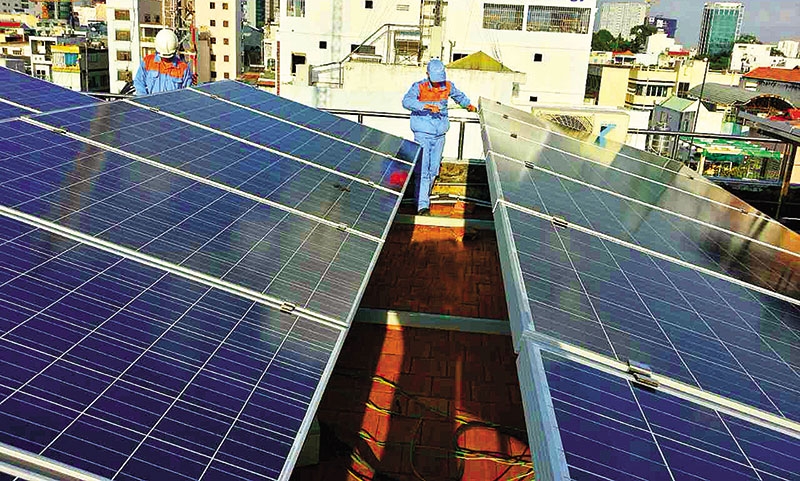
In the ever growing transitional world, we find ourselves hovering between two ages: a time dependent on fossil fuels and a future subjugated by renewable energy sources.
Yet not everyone is sold on the same vision. Opinions vary not only on how dependable some of these renewable energy sources are but also how they’ll be able to sustain life post-fossil fuel era.
The entire world has been debating over the topic of renewable energy sources for decades – how much should renewable energy be supported, how big is its impact and much more. Of these theories, majority of them are debating points based on obsolete assumptions and facts, which don’t really hold up anymore.
Out of all this a number of myths and misconceptions have risen to the surface. So, here’s presenting 8 of the bigger renewable energy myths currently making the rounds:
#1 Renewables Are an Insignificant Source of Power
This is by far one of the most common criticisms that renewable energy accounts for only a portion of U.S. electricity system. When we talk about the ‘newer’ renewable energy systems, such as solar and wind power – the statement largely stands true. This is because, these renewables provide 5% of generation capacity and as little as 4% of electricity production in US i.e. one tenth of the total energy provided by coal.
This criticism however ignores one very important aspect – conventional hydroelectric power, including the Hoover Dam is also an important source of renewable energy. Taken together, the hydroelectric sources with other renewables such as - biomass, solar, wind, and geothermal sources - together accounted to supply around 12% US electricity production last year and approximately 14% so far this year.
#2 Renewables Can Replace All Fossil Fuels
Few proponents claim a future 100% dependant on affordable and reliable renewables. Maintaining their focus on electricity, researchers at National Renewable Energy Laboratory handled this question. According to their study, approximately 80% of the electricity in US would be generated from renewable energy sources by the end of 2050.
However, getting there would be long and challenging slog. Precisely, the study found no reason why renewable energy cannot provide 80% power in US, but there are a host of challenges which would have to be met first.
#3 Renewables Are Too Expensive
At present, renewable energy is already cheaper than nuclear and coal power at every step.
A unit of electricity from Eskom’s new coal plant will cost around 97c, while the same energy from renewable sources would cost only 89c. Also, solar and wind energy do not require any input costs. For instance, certain amount has to be spent to purchase coal for a coal fired plant, however, solar and wind do not involve such input costs, as sunlight and wind are absolutely free.
#4 Renewable Energy Is Science Fiction
Renewable technology is all set to go and is in fact working reliably in many countries around the world.
The biggest economy of Europe – Germany already gets its 25% of electricity from renewable energy sources. The country is aiming to attain 80% energy from its renewable sources by 2050. Scotland, especially, has been doing exceptionally well in this area. With extremely helpful schemes such as those related to green deals assessments and energy grants, Scotland is on its way to set an example for rest of the world to follow.
#5 Renewable Energy Cannot Supply Electricity 24/7
The key to get continuous supply of renewable energy is to attain it from mixed sources of wind and solar power, anaerobic digestion plants and natural gas. Having a mixed of all sources, vastly spread over a wide area will definitely ensure a continuous supply of energy.
#6 Renewable Energy Is Bad For The Environment
A widespread argument against wind farms is their probability to kill bats and birds. However, if migratory patterns are studied and environmental impact assessments are conducted before construction, such hazardous impacts can greatly be reduced.
The land used for renewable energy projects, such as the wind farms can still be used for cattle grazing and farming. International experiences have revealed that livestock is completely unaffected with the presence of wind farms.
#7 Solar Power is Non-Viable During Winters
This is largely a false belief that solar power is non-viable in the absence of solar light. As the days in winter are comparatively shorter than summer months, so the expected yield may be lower during the winter days. But as long as there is sunlight, solar power can always be utilized to generate energy.
#8 Conventional Wind Turbines Are Noisy
Conventional wind turbines are far from producing any noise. In fact, you can even have a normal conversation while standing right next to one. All the wind farm proposals are supposed to comply with stern noise pollution standards outlined by the EPA, where FoE is completely supportive of it.
Renewable energy has a bright future and each country of the world should be optimum in it for a secure, healthy environment and for a brilliant future.
Reference: http://theenergycollective.com/conormacguire/399536/much-talked-about-myths-about-renewable-energy?utm_source=feedburner&utm_medium=email&utm_campaign=The+Energy+Collective+%28all+posts%29





.png)


